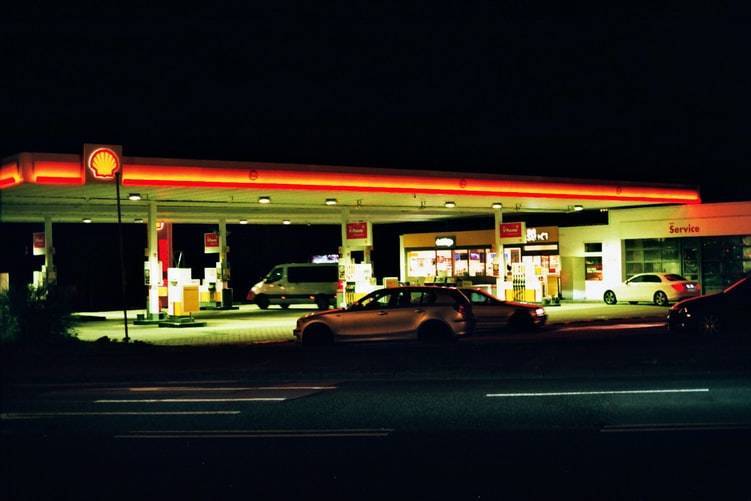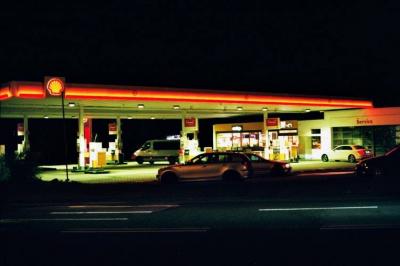Under the title "Climate Change: Why the Era of Gas Stations is Approaching Its End," BBC published an article by senior environmental correspondent Justin Rowlatt, highlighting that the main concern for most people considering the purchase of an electric vehicle is how to charge it. However, the real question to ask is how will you fuel your gasoline or diesel car if it is not electric. This question arises because forecasts indicate that electric vehicles will eliminate gas stations in the next two decades, making electric cars the available option for all car owners. Why? Because charging electric vehicles will become more apparent and straightforward than fueling gasoline and diesel cars. This is not only due to the government's ban on the sale of new gasoline and diesel cars starting 2030.
Imagine going in the opposite direction, replacing electric cars with those fueled by fossil fuels. We would need to assess the risks of building a new station, digging a large pit in the center of the city, placing some tanks, and filling them with massive amounts of highly flammable fuel. Then, we would install a truly powerful pump and invite random members of the public to it. They would arrive in hot engine cars, and the strong pump would dispense the highly flammable liquid to them. Without supervision, they would use it to transfer large quantities of flammable liquid to their hot cars, pay you, and drive away. Would you agree to that? Do you think health and safety would give the green light for such an operation? Here, I emphasize a specific point: fueling cars with gasoline and diesel is dangerous, which is why we do it at centralized refueling points designed specifically for that purpose.
Energy is available everywhere. In contrast, electricity is already everywhere. Where is your car now? Do you think it might be near a power cable? Exactly, it typically is. The only challenge is how to get that electricity, sitting a few feet underground, to the surface so you can start charging your battery. You don't need to be Thomas Edison to solve this problem. If you live in an apartment or a home with your own entrance, there's no need to worry. The goal is to get an electric vehicle (EV) charging point, which is nearly available at every parking spot. Pod Point, an electric vehicle charging company owned by Eric Verbirn, aims to be part of this effort to lay power lines in the UK. Eric Verbirn expects "to reach a stage where charging your car will hardly be an issue."
Of course, we are far from that utopia, and it should not be surprising. We are at the beginning of the electric revolution: only 7% of new cars are electric and represent a small fraction of the cars on the roads, so there is currently no huge market for electric vehicle charging. However, as I argued in my previous article, change is coming quickly, and investment in charging infrastructure is coming with it. A cheaper version of a Tesla electric vehicle is expected "within three years," and there will be good profits to be made when millions of us want to recharge our cars, just like the boom in building gas stations at the dawn of the automotive age a century ago.
The first to gain home charging technology are those who have entrances at their homes that enable them to plug in their electric cars. They can currently install private home charging points that recharge car batteries overnight from home power sources, often at the cheapest possible rates. This is usually a slow process. For every hour of charging, you get about 30 miles of driving distance, but who cares when most people leave their cars parked overnight anyway, and you only pay a small amount? Some local authorities have started installing similar chargers on streetlights, designers are working on charging points that can be installed in sidewalks, and some workplaces are already installing chargers for their employees. We will see more of all these innovations in the coming years. We have also started to see some companies installing charging points for their customers. In fact, free charging is likely to become like free Wi-Fi, a small incentive to attract you to the store.
Electric vehicle optimists envision a world where you can plug your car in anywhere you stop with a charging point, whether at home while sleeping, at work, while shopping, or at the cinema. Whatever you are doing, energy will flow to your car. Eric Verbirn says that at this stage, 97% of electric vehicle charging will occur away from gas station-like points. He states, "Imagine someone fills your car with gasoline every night so you have enough energy to travel 300 miles every morning. How often would you need another charging session in a day?" In this new world, you would never stop at a service station unless you were on truly epic long trips and then you would charge your battery for 20-30 minutes while having coffee and using the facilities.
If these forecasts hold true, it is a death knell for the 8,380 gas stations in Britain. The decline of this sector could come suddenly. Think about it: as electric vehicles start to reduce the consumption of gasoline and diesel, the business of gas stations will diminish. This will make it harder for gasoline and diesel drivers to find a service station, and remaining station owners might feel they have to raise their prices to stay afloat. Thus, there will be fewer gas stations, possibly higher in cost. Meanwhile, charging your electric car will become easier, and moreover, as the market grows, electric vehicles will become cheaper. You can see where this is headed... The more gas stations close, the more likely we all are to transition to electricity. In turn, more gas stations will be forced to shut down. For this reason, I dubbed this process a death spiral.
Don't worry about the electricity supply to power all these new cars. The national grid claims it will have no problem charging all the electric vehicles that will be on our roads. In fact, the grid does not anticipate a significant increase in demand, as it expects the increase to not exceed 10% when everyone drives electric cars. That's because we drive much less than we think, with the average car trip being only 8.4 miles, according to the Department of Transport. Isabel Hay, head of oversight at the national grid, explains that there is already a significant amount of spare capacity built into the system. She says, "Most charging will not occur during peak times, and peak demand has decreased over the years, so we are very confident there is enough energy to meet the demand." This is because the grid is designed to meet the most demanding moments, such as the second half of the Euro finals. During the rest of the time, some power stations remain idle, and electric cars will be able to benefit from this since people typically charge overnight when demand is low, thus unlikely ever to raise peak demand.
Smart charging systems will also help, allowing your charger to communicate with the grid to determine the best time to charge your car. The idea is to ensure you get the cheapest energy while also helping the grid relieve peak pressures. Smart charging also helps to make the most of renewable resources by allowing drivers to take advantage of abundant and hence cheaper electricity available on a windy day, for example, when large amounts of electricity are generated from wind power.
However, the end of service stations should not be a cause for celebration; they represent the last retail outlet in some small towns and villages, a lifeline for many people. So, can they play an alternate role? Jack Simpson believes that at least some will be able to. He transformed an old gas station in Leeds into a book club called Hyde Park Book Club, featuring a plant shop, pub, music theater, restaurant, and art exhibition, even hosting spirit-séance sessions. Jack explains, "People would come for dinner, and I had to apologize as there was a spirit-séance ongoing."
Brian Maderson, head of the British Retail Petroleum Association (BPRA), is more realistic. Representing 5,500 independent fueling retailers who make up 70% of the industry, Maderson says members of the association have begun adapting to a world post-internal combustion engines. Many are already investing in full grocery stores, high-quality ready meals, and automatic car washes to boost their income, stating that they will continue to enable drivers to charge their gasoline and diesel cars as long as possible. He believes the shift away from gasoline and diesel will take decades. He says, "These vehicles will not just disappear from the roads overnight; gas and diesel stations will be essential to keep the country running beyond 2030."
However, technological change can be very rapid and disturbingly swift. Remember what happened to the horse and carriage at the beginning of the 20th century. Some service stations will definitely survive, particularly those located on highways, but many others are likely to take the same path as Jack Simpson's guests in their spirit-séance sessions, unless they can find new ways to generate income.




